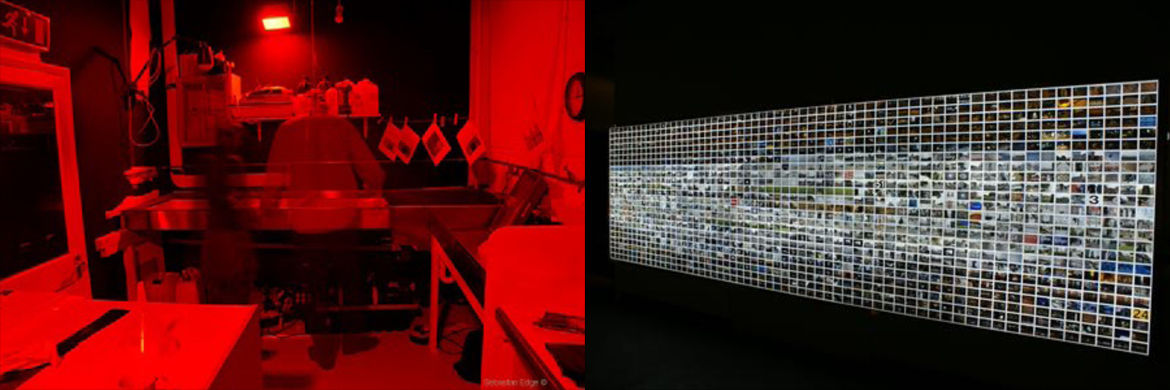I fell in love with photography while living in a hogan-shaped dormitory, suspended 1900 meters in the air, deep on the Navajo Reservation. I enrolled in a Beginning Black & White Darkroom course at Dine College that was taught by Professor Karen Willeto. I was introduced to the analogue world of photography where seconds and minutes, ounces and inversions, and burning and dodging formed the backbone for creating visual representational reality.
I fell in love with the whole process and it was a … "Romeo drinks the poison because he can’t bear having lost Juliet" … kind of love. I spent year(s) of late nights and early mornings huddled over dim red lights, manipulating liquids in canisters and trays, watching images magically appear from pools of liquid. Words cannot describe how incredible it felt to not only be able to bring something back to life that I had witnessed earlier, but to also be able to learn about it in far greater detail as it stood suspended indefinitely in front of me.
I remember buying my first "real" digital camera at the turn of the century from a monstrously oversized retail shop somewhere deep inside North America. We all know about these cavernous stores, the ones where much of the merchandise is destined to be in a landfill within 9 months. After a young man, dressed in blue overalls, eagerly informed me of this particular model’s advantages over the rest of the competition, I took out the charge card and made my choice.
I drove my certified pre-owned automobile back to my prefab cream-colored apartment in an 80s master planned community just outside a newly revitalized city center. I took the camera out of its plastic wrapping and preformed Styrofoam packaging and stared at it as if I had accidently picked up a petrified cow patty. Having no better idea in mind, I pushed down on the shutter release button and rather unceremoniously joined the digital age of visual image making and taking.
Digital photography and analogue photography are not the same thing. This is a rather sizable, blustery statement that deserves a proper wedding or funeral, but as this is only a blog entry I will leave it to the audience to debate the intricacies of this loaded claim. Suffice to say, that for me, these two things are as different as the Professor versus Gilligan (and for those of you that get this reference, a red Ferrari is not the answer).
In case it isn’t clear yet, my first reaction to digital photography was to poo-poo its existence. I imagine this emotional reaction is similar to what a 19th century painter felt when analogue photography first came into existence. All of a sudden there was a machine that could recreate reality in a manner that was … quite realistic. And to add further insult to injury, the practitioners of these machines were making claims that the byproducts of their labor should be considered art. What poppycock!
I guess I felt the same way about digital photography. Afterall, my special skill set, my special love, had been bastardized and turned into a trinket for the masses. Images began to proliferate at a rate that was previously unimaginable. I wandered the empty streets of Providence muttering under my breath, "all these carelessly made images with their flawless highlights and shadows are an intrusion on my intellectual space." Eventually I realized that the "digital thing" was here to stay and that I would have to reconcile with its presence. Opening my mind … learning to see again … not applying predetermined parameters to newly confronted realities … progress … slow and steady.
The Mappings project represents a significant marker on my path to embrace and dialogue with digital photography’s unique visual making characteristics. It is the digital camera’s ability, nay its potential, to take images ad nauseam that makes Mappings possible. The enormous scope of photographic residue that is collected from each performance is akin to a visual encyclopedic entry that encourages a myriad of extrapolations about a wide-ranging set of issues. For instance, the 6-meter by 2-meter object that presents the 1440 images in an orderly grid, becomes a convincing physical measure of time and a thought-provoking study of transient light.
